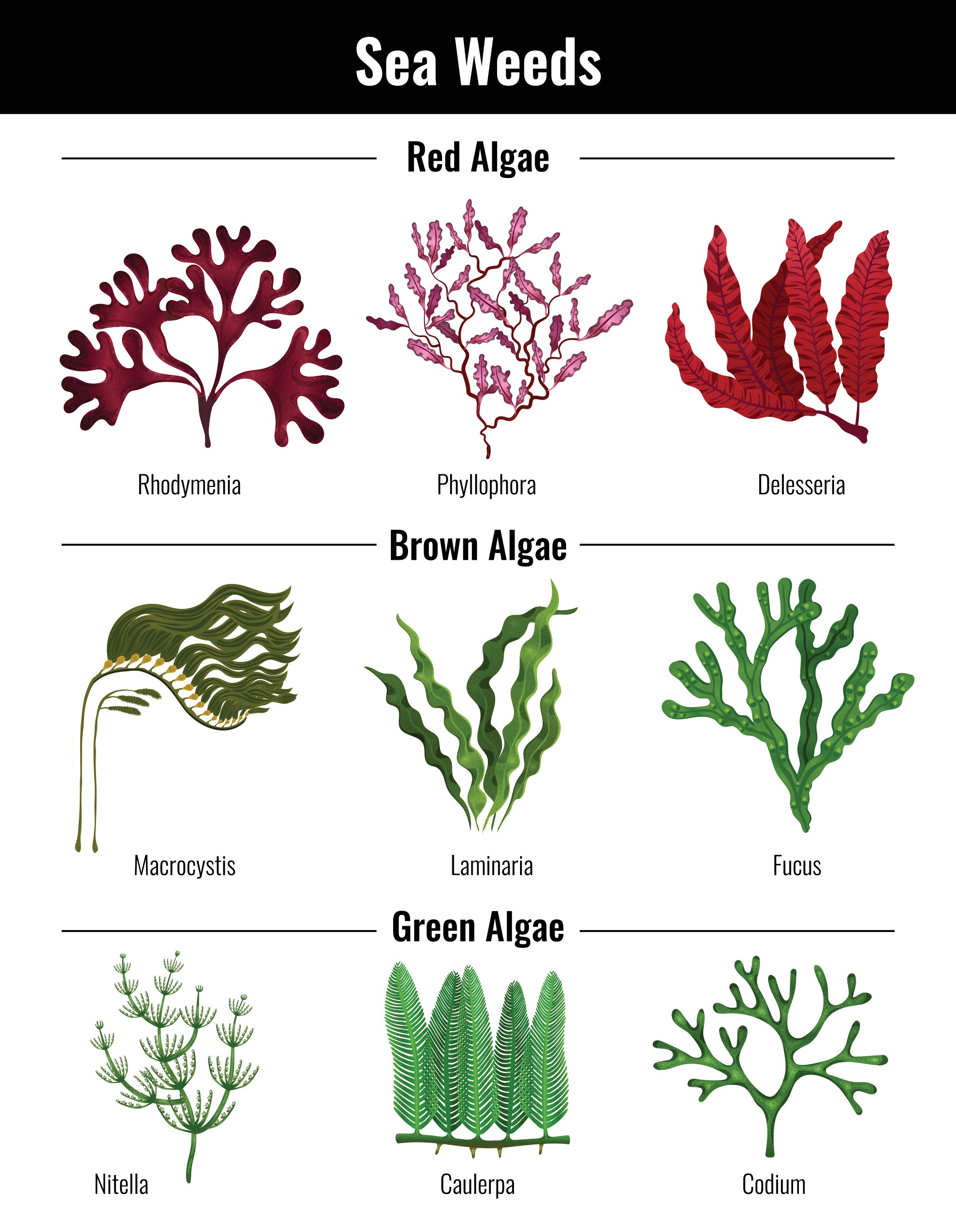22 Seaweed Facts to Know In 2022
Most of the world’s oxygen comes from seaweed! Researchers say that roughly 70% of the world’s oxygen is produced by sea species including phytoplankton, kelp, and algal plankton. In comparison, rainforests make up 28% of oxygen production, while 2% comes from other sources. Crazy, right? It’s one of many reasons to take good care of our oceans and keep them clean and healthy.
There are 9 times more seaweeds in the oceans than there are plants on the land.
Seaweeds reduce pollution! They absorb excess toxins, like organic chemicals and heavy metals, from the water. They also absorb carbon dioxide and turn it into seaweed biomass in a process called carbon sequestration. Seaweed grows really fast—way faster than trees—so it can suck up carbon dioxide at a phenomenal speed.
There are over 12,000 species of seaweeds, all with different sizes and colors. Seaweed isn’t the name of a single plant—it is a common name for thousands of marine plants and algae. There are three main seaweed categories: red, green, and brown.
Just like plants, all three types of seaweed have chlorophyll. Chlorophyll is a natural compound present in green plants that is responsible for their green color. Brown and red seaweeds have other pigmentation that overrides the green color of chlorophyll.
Green, red, and brown seaweeds live only in salt waters. Green seaweeds can be found in shallow waters in warm, tropical climates. Brown seaweeds are much bigger than the green seaweeds and live at greater depths. Red seaweeds can grow in cold water that is either shallow or deep.
All seaweeds need sunlight to survive. That’s why they usually grow mainly at the edges of oceans.
Seaweed is a superfood that can fuel your body with hearty nutrients. It’s packed with potassium, iodine, vitamins, and other trace elements. We can definitely say that seaweed is the kale of the sea! It has many health benefits for marine animals and humans alike.
Porphyra, a type of red seaweed, is known as nori in Japan and is one of the main ingredients in sushi. Other popular edible seaweeds include wakame and kelp, which are both brown seaweed varieties.
Seaweeds have many purposes. They are used in human foods, medicine, and cosmetics, as well as in animal feeds. They also make an excellent fertilizer because they soak up micronutrients and antioxidants from clean water.
Seaweed and algae aren’t exactly synonyms!
Seaweed is a type of multicellular algae, and algae is a large and various group of species that includes photosynthetic eukaryotic organisms. Algae are simple, plantlike organisms that are believed to be ancestors of modern-day land plants. Plantlike algae do not have vascular tissue and lack true roots, stems, or leaves. There are two types of algae: microalgae and macroalgae. Small microalgae are also known as phytoplankton, and large macroalgae are called seaweed. Like true plants, both phytoplankton and seaweed contain chlorophyll and are photosynthetic (meaning they use sunlight to create nutrients!).Kelp and seaweed aren’t exactly synonymous either!
Kelp is actually a specific type of brown seaweed that grows to very big sizes. Seaweed is the general term that refers to the whole group of species.Seaweeds don’t have roots… or flowers.
Although they look like plants, seaweeds are different because they don’t have roots or flowers. Seaweeds may seem like they have roots, but they actually just attach to something underwater. Larger seaweeds, such as kelp, have root-like “tails” called holdfasts that help them hold firmly to a rock. Only a few types of seaweed can survive free-floating in the ocean.Seaweeds play a crucial role in underwater ecosystems.
They provide food and shelter for fish and other marine animals, like sea urchins and crustaceans. Living at the base of the food chain, they support many other life forms in aquatic communities. For instance, kelp grows in colonies and forms underwater forests, which provide shelter for various marine organisms.When fried, seaweed may taste like… bacon! And species like dulse are also said to have a yummy, bacon-like taste.
In addition to being a super hearty and delicious food, seaweed is vital for the health of the skin, too. The anti-inflammatory qualities in seaweed can help treat acne, while its abundance of antioxidants act as powerful anti-agers. Many, many centuries ago, the ancient Greeks added seaweed to their warm baths to draw out toxins from the body and rejuvenate their skin. Seaweed contains many beneficial minerals such as zinc, calcium, magnesium, copper, and iodide, all of which can be absorbed through the skin to keep it resilient and elastic.
Candles, pasta, salts, and even chocolate can be made of seaweed!
Seaweeds are a complex group of organisms, and they can reproduce in a number of ways. More advanced seaweeds might release cells called zoospores that swim off, anchor themselves to a distant rock, and begin growing.
Norway has vast areas along its beautiful coastline that are suitable for seaweed cultivation.
Seaweeds are very independent. In scientific terms, they are “primary producers,” meaning they get energy from sunlight and necessary materials from nonliving sources. Seaweeds can be grown in the sea without the use of land, fertilizers, fresh water, pesticides, or antibiotics.
Seaweed is an essential part of the multi-trophic aquaculture.
There are so many ways to eat and cook seaweed! Check out the variety of recipes at Yummly, Kids Eat by Shanai, and BBC Good Food.



